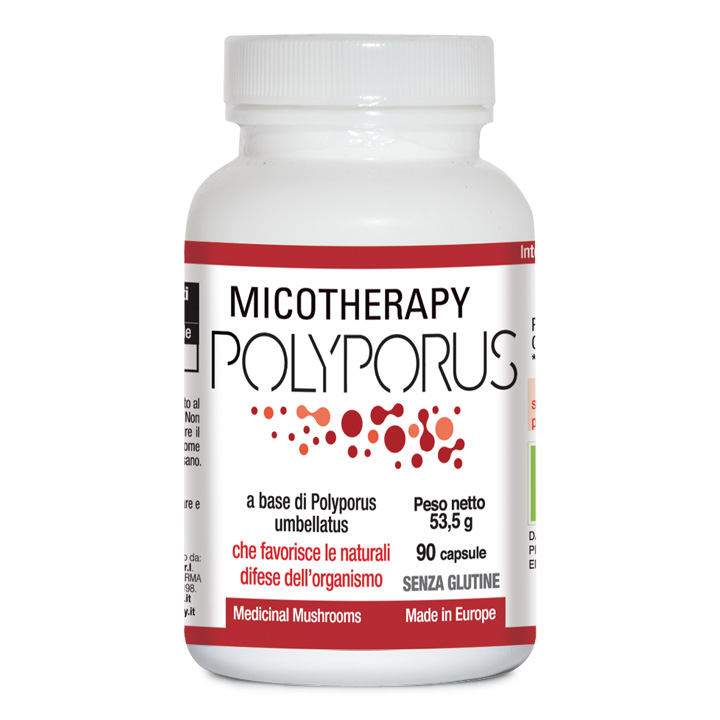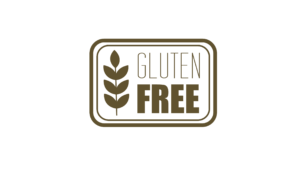
Drenaggio dei liquidi corporei
Integratore alimentare a base di Polyporus umbellatus da coltivazione biologica (IT BIO 006) – Made in Europe.

Proprietà:
Tradizionalmente utilizzato come rimedio ad azione diuretica, il Polyporus umbellatus esplica la sua azione soprattutto in presenza di ritenzione idrica, edemi e difficoltà nella minzione. A differenza dei diuretici farmacologici tuttavia, permette l’eliminazione del sodio e del cloro ma mantiene il potassio.
Finalità Salutistiche:
Il Polyporus è un fungo con tropismo specifico per il sistema linfatico pertanto risulta utile ogni qualvolta vi sia stasi linfatica o presenza di linfedemi. Studi clinici hanno confermato la sua azione diuretica (effetto anti-aldosteronico) senza effetti collaterali, poiché non comporta la perdita di potassio.
Ingredienti:
- Polyporus umbellatus sporophorum, da agricoltura biologica (IT BIO 006)
- antiagglomeranti: calcio carbonato, biossido di silicio
- Capsula in cellulosa vegetale
Modalità d’uso:
3 capsule al giorno preferibilmente prima dei pasti
Formato:
confezione da 90 capsule
NOTE:

No OGM
Ingredienti da agricoltura biologica – Made in Europe
Inserito nel registro degli integratori: codice 84612
codice Paraf: 970430361
| TENORE MEDIO DEGLI INGREDIENTI CARATTERIZZANTI | PER DOSE GIORNALIERA (3 CPS) |
| Polyporus umbellatus sporophorum | 1200 mg |
Bibliografia:
- Chang, H.M. & P.P. But, 1986. Pharmacology and Applications of Chinese Materia Medica. Vol. 1. Singapore, World Scientific
- Yuan D, Mori J, Komatsu KI, Makino T, Kano Y. An anti-aldosteronic diuretic component (drain dampness) in Polyporus sclerotium. Biol Pharm Bull. 2004 27(6):867-70
- Satish H, Raman D, Shivananda BG, Kshama D, Rajesh MS, Deepak M, Shivananda TN. Antiurolithiatic herbal drugs – a review. Biomed. 2006 1(2):95-119
- JJ Li, YY Tu, JZ Tong, and PT Wang Inhibitory activity of Dianthus superbus L. and 11 kinds of diuretic Traditional Chinese medicines for urogenital Chlamydia trachomatis in vitro Zhongguo Zhong Yao Za Zhi, Oct 2000; 25(10): 628-30
- Inaoka Y, Shakuya A, Fukazawa H, Ishida H, Nukaya H, Tsuji K, Kuroda H, Okada M, Fukushima M, Kosuge T.Studies on active substances in herbs used for hair treatment. I. Effects of herb extracts on hair growth and isolation of an active substance from Polyporus umbellatus F. Chem Pharm Bull (Tokyo). 1994 42(3):530-3
- Ishida H, Inaoka Y, Shibatani J, Fukushima M, Tsuji K. Studies of the active substances in herbs used for hair treatment. II. Isolation of hair regrowth substances, acetosyringone and polyporusterone A and B, from Polyporus umbellatus Fries. Biol Pharm Bull. 1999 22(11):1189-92
- Yang D, Li S, Wang H, Li X, Liu S, Han W, Hao J, Zhang H. [Prevention of postoperative recurrence of bladder cancer: a clinical study] Zhonghua Wai Ke Za Zhi. 1999 37(8):464-5. Chinese
- Yang DA. [Inhibitory effect of Chinese herb medicine Zhuling on urinary bladder cancer. An experimental and clinical study] Zhonghua Wai Ke Za Zhi. 1991 29(6):393-5, 399. Chinese
- Zhang Guo-Wei et al. Efficacy of Zhuling polyporus polysaccharide with BCG to inhibit bladder carcinoma. Carbohydrate Polymers. Volume 118, 15 March 2015, Pages 30–35
- Yang Y et al. Wuling San protects kidney dysfunction by inhibiting renal TLR4/MyD88 signaling and NLRP3 inflammasome activation in high fructose-induced hyperuricemic mice. Journal of Ethnopharmacology Volume 169, 1 July 2015, Pages 49–59
- Bandara AR et al. Polyporus umbellatus, an Edible-Medicinal Cultivated Mushroom with Multiple Developed Health-Care Products as Food, Medicine and Cosmetics: A Review . Cryptogamie, Mycologie 36(1):3-42. 2015?
- Chen D.Q., An J.M., Feng Y.L., Tian T., Qin X.Y. & Zhao Y.Y., 2013 — Cloud-point extraction combined with liquid chromatography for the determination of ergosterol, a natural product with diuretic activity, in rat plasma, urine, and faeces. Journal of analytical methods in chemistry. Available at: http://dx.doi.org/10.1155/2013/479056
- Bi Y., Miao Y., Han Y., Xu J. & Wang Q., 2013 — Biological and physicochemical properties of two polysaccharides from the mycelia of Grifola umbellata. Carbohydrate Polymers 95: 740–745
- Zhao YY et al. A Pharmaco-Metabonomic Study on Chronic Kidney Disease and Therapeutic Effect of Ergone by UPLC-QTOF/HDMS. PLOS ONE | DOI:10.1371/journal.pone.0115467 December 23, 2014
- Zhao YY. Traditional uses, phytochemistry, pharmacology, pharmacokinetics and quality control of Polyporus umbellatus (Pers.) Fries: A review. Journal of Ethnopharmacology 149 (2013) 35–48
- Zhao YY. Effect of ergosta-4,6,8(14),22-tetraen-3-one (ergone) on adenine-induced chronic renal failure rat: A serum metabonomic study based on ultra performance liquid chromatography/high-sensitivity mass spectrometry coupled with MassLynx?i-FIT algorithm. Clinica Chimica Acta 413 (2012) 1438–1445
- Zhao YY et al. Ergosta-4,6,8(14),22-tetraen-3-one isolated from Polyporus umbellatus prevents early renal injury in aristolochic acid-induced nephropathy rats. J Pharm Pharmacol. 2011 Dec;63(12):1581-6
- Zhang G et al. Diuretic activity and kidney medulla AQP1, AQP2, AQP3, V2R expression of the aqueous extract of sclerotia of Polyporus umbellatus FRIES in normal rats. Journal of Ethnopharmacology 128 (2010) 433–437
- Zhao YY et al. Ergosta-4,6,8(14),22-tetraen-3-one induces G2/M cell cycle arrest and apoptosis in human hepatocellular carcinoma HepG2 cells. Biochimica et Biophysica Acta 1810 (2011) 384–390
- Zhao YY et al. Cytotoxic Steroids from Polyporus umbellatus. Planta Med 2010; 76: 1755–1758
- Zhao YY et al. Bioactivity-directed isolation, identification of diuretic compounds from Polyporus umbellatus. Journal of Ethnopharmacology 126 (2009) 184–187
- Lee WY et al. Cytotoxic Activity of Ergosta-4,6,8(14),22- tetraen-3-one from the Sclerotia of Polyporus umbellatus. Bull Korean Chem Soc. 2005 Vol 26 n.9
- Sekiya N et al. Inhibitory Effects of Triterpenes Isolated from Chuling (Polyporus umbellatus FRIES) on Free Radical-Induced Lysis of Red Blood Cells. Biol. Pharm. Bull. 28(5) 817—821 (2005)
per ulteriori informazioni visitate il sito: www.micotherapy.it




